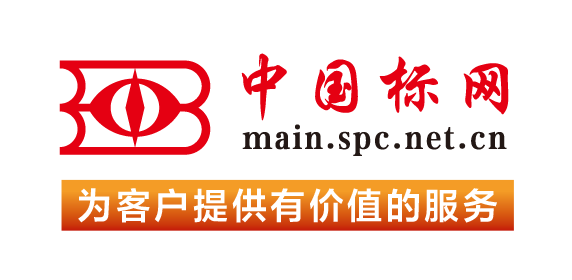3.1 This terminology standard describes terms and definitions used in standards for radiochemical analysis maintained by ASTM Committee D19 on Water. The terminology is also recommended for general use in the radiochemistry community.1.1 This standard describes terminology commonly used in radiochemistry and radioanalysis.1.2 The values stated in SI units are to be regarded as standard. Other units of measurement, including some units that are not accepted for use with the SI, are also defined.1.3 This standard does not purport to address all of the safety concerns, if any, associated with its use. It is the responsibility of the user of this standard to establish appropriate safety, health, and environmental practices and determine the applicability of regulatory limitations prior to use.1.4 This international standard was developed in accordance with internationally recognized principles on standardization established in the Decision on Principles for the Development of International Standards, Guides and Recommendations issued by the World Trade Organization Technical Barriers to Trade (TBT) Committee.
定价: 590元 加购物车
1.1 This terminology covers definitions of technical terms used in the plastics industry. Terms that are generally understood or adequately defined in other readily available sources are not included.1.2 When a term is used in an ASTM document for which Committee D20 is responsible it is included only when judged, after review, by Subcommittee D20.92 to be a generally usable term.1.3 Definitions that are identical to those published by another standards body are identified with the abbreviation of the name of the organization; for example, IUPAC is the International Union of Pure and Applied Chemistry.1.4 A definition is a single sentence with additional information included in discussion notes.NOTE 1: It is recommended that definitions be reviewed periodically.1.4.1 When a new definition is added to this terminology standard, or the wording of a definition is revised, the date of the change shall be appended to the new or revised definition.1.5 For literature related to plastics terminology, see Appendix X1.1.6 Subsections 1.6.1 – 1.6.5 contain references to specific terminology standards that are relevant to specific plastic products or applications. In case of conflict between a definition contained in Terminology D883 and one contained in another standard, the definition given in Terminology D883 shall prevail.1.6.1 For terms related to thermal insulation, the applicable definitions are contained in Terminology C168.1.6.2 For terms related to electrical or electronic insulating materials, the applicable definitions are contained in Terminology D1711.1.6.3 For terms relating to fire, the applicable definitions are contained in Terminology E176 and ISO 13943. In case of conflict between Terminology E176 and ISO 13943, the definitions given in Terminology E176 shall prevail.1.6.4 For terms relating to precision and bias and associated issues, the applicable definitions are contained in Terminology E456.1.6.5 For terms related to plastic piping systems, the applicable definitions are contained in Terminology F412.1.7 This international standard was developed in accordance with internationally recognized principles on standardization established in the Decision on Principles for the Development of International Standards, Guides and Recommendations issued by the World Trade Organization Technical Barriers to Trade (TBT) Committee.
定价: 646元 加购物车
This specification covers seven grades of diesel fuel oils suitable for various types of diesel engines. These grades are: Grade No. 1-D S15; Grade No. 1-D S500; Grade No. 1-D S5000; Grade No. 2-D S15; Grade No. 2-D S500; Grade No. 2-D S5000; and Grade No. 4-D. The requirements specified for diesel fuel oils shall be determined in accordance with the following test methods: flash point; cloud point; water and sediment; carbon residue; ash; distillation; viscosity; sulfur; copper corrosion; cetane number; cetane index; aromaticity; lubricity; and conductivity.1.1 This specification covers seven grades of diesel fuel suitable for various types of diesel engines. These grades are described as follows:1.1.1 Grade No. 1-D S15—A special-purpose, light middle distillate fuel for use in diesel engine applications requiring a fuel with 15 ppm sulfur (maximum) and higher volatility than that provided by Grade No. 2-D S15 fuel.21.1.2 Grade No. 1-D S500—A special-purpose, light middle distillate fuel for use in diesel engine applications requiring a fuel with 500 ppm sulfur (maximum) and higher volatility than that provided by Grade No. 2-D S500 fuel.21.1.3 Grade No. 1-D S5000—A special-purpose, light middle distillate fuel for use in diesel engine applications requiring a fuel with 5000 ppm sulfur (maximum) and higher volatility than that provided by Grade No. 2-D S5000 fuels.1.1.4 Grade No. 2-D S15—A general purpose, middle distillate fuel for use in diesel engine applications requiring a fuel with 15 ppm sulfur (maximum). It is especially suitable for use in applications with conditions of varying speed and load.21.1.5 Grade No. 2-D S500—A general-purpose, middle distillate fuel for use in diesel engine applications requiring a fuel with 500 ppm sulfur (maximum). It is especially suitable for use in applications with conditions of varying speed and load.21.1.6 Grade No. 2-D S5000—A general-purpose, middle distillate fuel for use in diesel engine applications requiring a fuel with 5000 ppm sulfur (maximum), especially in conditions of varying speed and load.1.1.7 Grade No. 4-D—A heavy distillate fuel, or a blend of distillate and residual oil, for use in low- and medium-speed diesel engines in applications involving predominantly constant speed and load.NOTE 1: A more detailed description of the grades of diesel fuels is given in X1.2.NOTE 2: The Sxxx designation has been adopted to distinguish grades by sulfur rather than using words such as “Low Sulfur” as previously because the number of sulfur grades is growing and the word descriptions were thought to be not precise. S5000 grades correspond to the so-called “regular” sulfur grades, the previous No. 1-D and No. 2-D. S500 grades correspond to the previous “Low Sulfur” grades. S15 grades were not in the previous grade system and are commonly referred to as “Ultra-Low Sulfur” grades or ULSD.1.2 This specification, unless otherwise provided by agreement between the purchaser and the supplier, prescribes the required properties of diesel fuels at the time and place of delivery.1.2.1 Nothing in this specification shall preclude observance of federal, state, or local regulations which can be more restrictive.NOTE 3: The generation and dissipation of static electricity can create problems in the handling of distillate diesel fuels. For more information on the subject, see Guide D4865.1.3 The values stated in SI units are to be regarded as standard. No other units of measurement are included in this standard.1.4 This international standard was developed in accordance with internationally recognized principles on standardization established in the Decision on Principles for the Development of International Standards, Guides and Recommendations issued by the World Trade Organization Technical Barriers to Trade (TBT) Committee.
定价: 843元 加购物车
 我的标准
我的标准 购物车
购物车 400-168-0010
400-168-0010











 对不起,暂未有相关搜索结果!
对不起,暂未有相关搜索结果!













